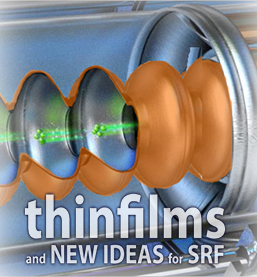Speaker
Description
Especially in neutral-dominant, low-power DCMS discharges, sputtering is treated often implicitly as a line-of-sight process: The relative growth-rate of a film at a given location is dominated by the position and orientation with respect to the closest sputtering surface. However, complications can arise due to the complex geometry of a substrate, particularly with multiple sputtering targets. One such substrate is the Wide Open Waveguide Crab Cavity (WOWCC), investigated in the Future Circular Collider study at CERN [1]. With niobium sputtering profiles extracted from a Particle-In-Cell Monte-Carlo (PIC-MC) plasma simulation [2], different tools are compared to investigate the ensuing transport processes.
Here, we present results from Molflow [3], an open-source particle tracing code originally designed for modelling high-vacuum systems. As a ray-tracing MC simulation, it only models collisions on boundaries. Volume collisions with the process gas are ignored in favour of a drastic reduction in computational effort. These purely line-of-sight based results are benchmarked against an established collisional code [2]. While their overall agreement is remarkable, the impact of volume collisions is still locally appreciable. Discrepancies are quantified and explained e.g. through the influence of distant targets and shadowing. Rules-of-thumb for general settings are outlined. Further comparisons against SiMTra [4] are foreseen, but hampered due to 3D modelling limitations.
Summary
The successful benchmarking of a line-of-sight based Monte Carlo code for sputtering transport simulations is presented in the context of the Wide-Open Waveguide Crab Cavity project for the CERN Future Circular Collider study.

